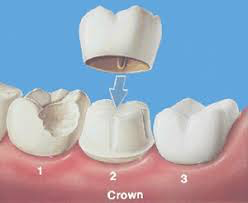
Whitening
There’s no way around it: yellowing and stained teeth are something most people have to deal with at some point in their lives. While teeth naturally lose their whiteness as we age, smoking, drinking coffee or tea, and certain medications can exacerbate discoloration. Luckily, teeth whitening is an effective, affordable solution to this problem. We offer both advanced in-office bleaching treatments as well as customized at-home bleaching kits. Both options are stronger than store-bought whitening solutions, meaning you’ll see more dramatic results in a shorter amount of time.

Veneers
Porcelain veneers are a solution for patients who are unhappy with the color, shape, or size of their teeth. They can even be used to correct minor cases of misalignment. We first remove a thin layer of enamel from your tooth, then apply a dental adhesive for the veneer to adhere to. An ultraviolet light cures the adhesive and you’re ready to enjoy your new smile.

Bondings
Cosmetic bonding is used to correct teeth that are chipped, cracked, or otherwise damaged. We can also use bonding to close gaps between two teeth. During the bonding process, a tooth-colored resin is applied to the tooth and shaped for a natural appearance. The resin is cured with an ultraviolet light, setting it before you leave our office.

Crowns
A crown is a dental restoration that completely covers the outside of a tooth that is cracked, broken, worn down, or severely decayed. Dental crowns are usually completed in two visits. During the first visit, the tooth is prepared (shaved down) and an impression is taken. A temporary crown is placed while the permanent crown is fabricated. During the second visit, the permanent crown is carefully fitted and then cemented into place.

Implants
Dental implants are composed of three pieces: a small screw made of a biocompatible metal called titanium, an abutment which connects the screw and the final restoration, and the final restoration. The screw, which is placed in the jawbone, acts as a replacement for the tooth root, providing a strong foundation for fixed or removable replacement teeth. The screw begins to fuse with the bone over the course of a few months. After the fusing process, known as osseointegration, the abutment is inserted into the screw to allow for the permanent attachment of the restoration.

